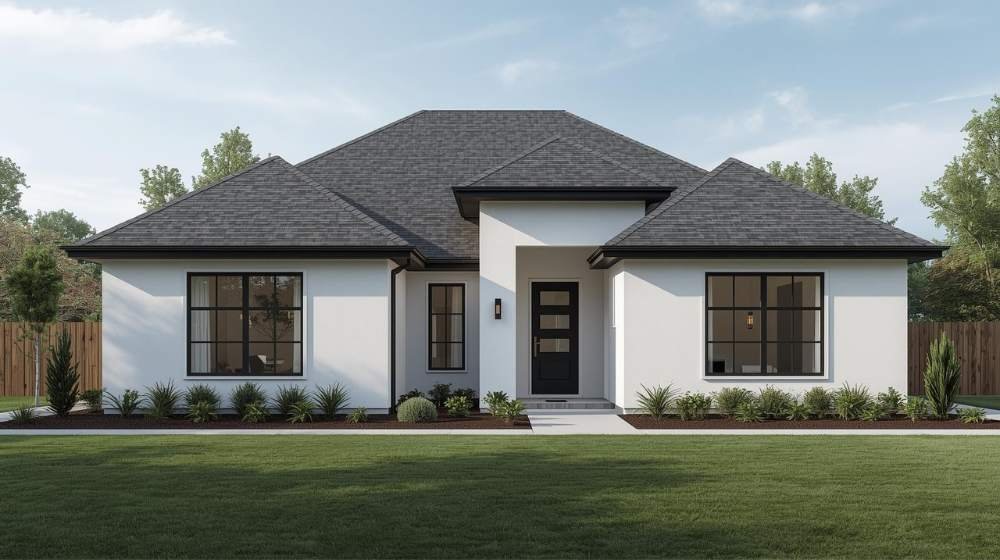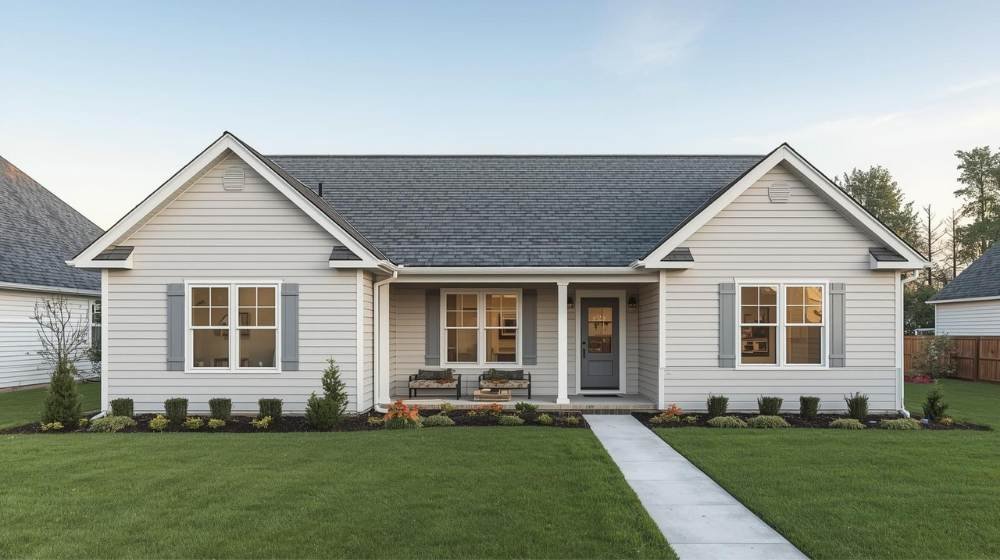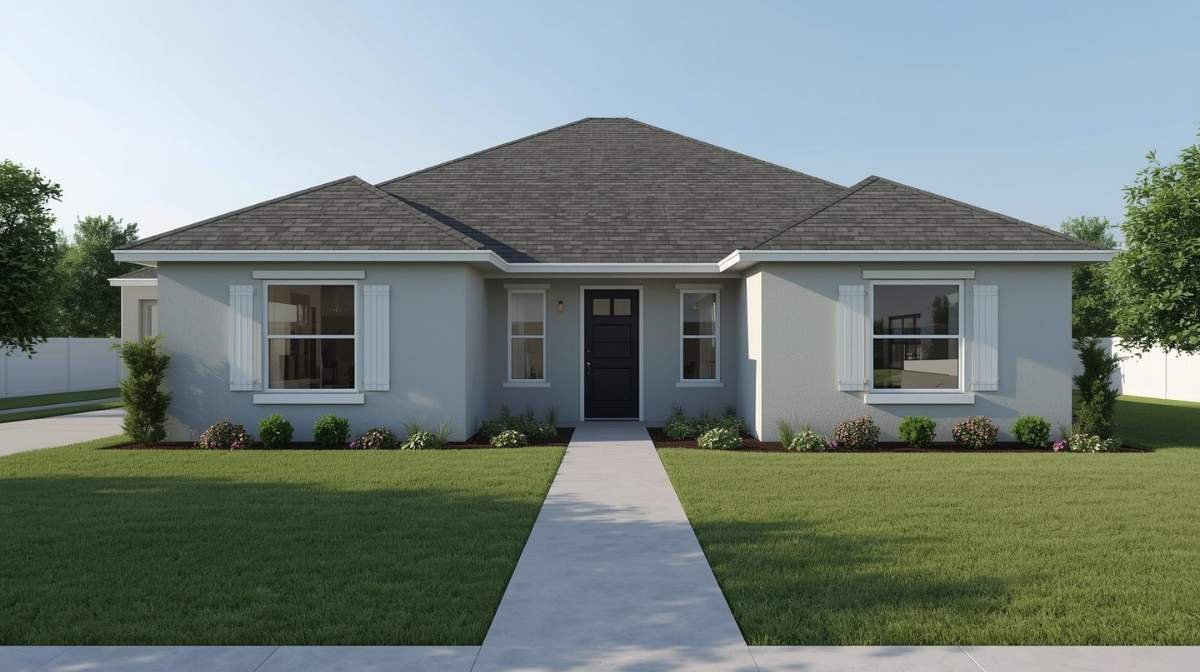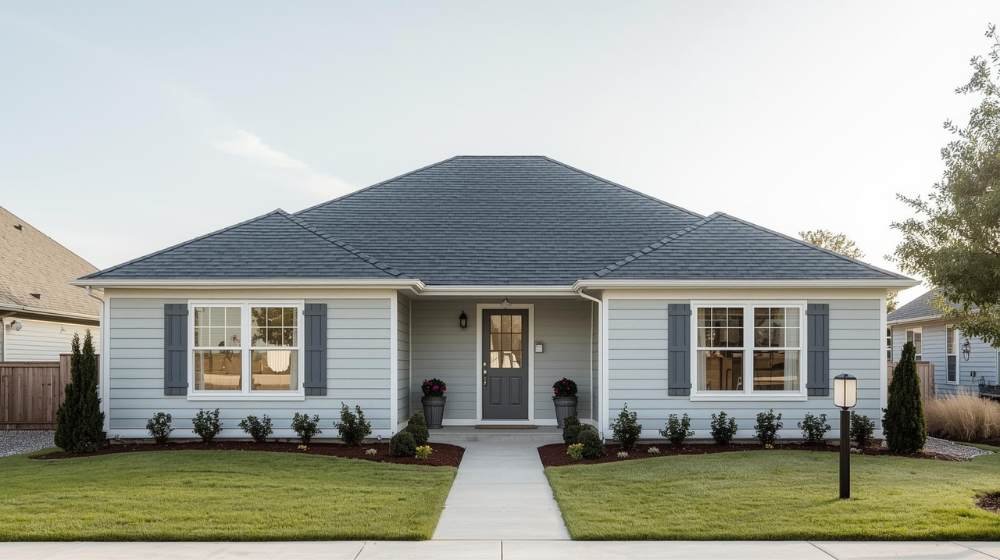Are you thinking about upgrading your roof but are not sure which style would work best for your home in Brooklyn? A hip roof might just be the perfect solution! While hip roofs offer several advantages, they also come with some challenges. In this blog, we’ll take a deep dive into both the advantages and disadvantages of a hip roof to help you make an informed decision.
From enhanced stability and wind resistance to higher construction costs, we’ll explore everything you need to know before choosing this roof design for your home. We’ll also guide you through important factors to consider when selecting a roofing contractor and answer some common questions about hip roofs.

What is a hip roof?
A hip roof is a roof design where all four sides slope down towards the walls. It has no gables or vertical sides, which gives it a symmetrical, pyramid-like shape. Hip roofs are known for their stability, which makes them more resistant to high winds. This design is often preferred in areas with severe weather conditions, such as strong winds or heavy snowfall.
Advantages of a Hip Roof
A hip roof comes with several key advantages that can benefit homeowners. It offers improved wind resistance, better durability, and a longer lifespan compared to other roof types. The design also facilitates efficient drainage. It reduces the chance of water damage. Additionally, its symmetrical shape enhances the aesthetic appeal of your home.
Enhanced Wind Resistance and Stability
One of the outstanding features of a hip roof is its resistance to high winds. Since all four sides slope downwards, the wind is less likely to catch and damage the roof. This makes it an excellent choice for homes in storm-prone areas, such as Brooklyn, where strong winds can be a significant concern. The design helps keep your home more stable during severe weather.
Superior Durability and Longevity
A hip roof is built to last. The even distribution of weight across all four sides reduces stress on the structure, enhancing its overall strength. This extra strength helps keep your roof from becoming worn out, so it will last for many years. With proper care, a hip roof can last 40 to 60 years or even longer, outlasting other roof types like gable roofs, giving you peace of mind and long-term value.
Improved Drainage and Reduced Water Accumulation
The sloped design of a hip roof promotes better drainage. Rainwater and snow slide off the roof more easily, reducing the risk of water pooling or accumulating on top. This is especially important in areas with heavy rainfall or snow, where standing water can cause leaks or ice dams. The slopes help prevent water damage, keeping your home dry and safe. By reducing water accumulation, a hip roof also helps maintain the integrity of the roof structure.
Aesthetically Pleasing and Symmetrical Design
A hip roof has a symmetrical design that adds elegance to any home. The clean, balanced lines of the roof create a modern look that can complement various architectural styles. This outlook makes it a popular choice for homeowners looking to boost their home’s curb appeal. Whether your home is traditional or contemporary, a hip roof can enhance its overall appearance. Its uniform shape brings a sense of order and beauty to the roofline.
Better Energy Efficiency
Hip roofs can offer better energy efficiency than other types of roofs. The sloped shape facilitates ventilation by allowing air to circulate more easily. This can help to keep your home cooler in the summer and warmer in the winter, which leads to energy savings of 10-15%. With proper insulation, the energy efficiency of a hip roof can significantly reduce heating and cooling costs. The overall design helps maintain a comfortable temperature year-round, which saves you money on energy bills.
Increased Attic and Ceiling Space
A hip roof provides more attic space due to its sloped design. The higher pitch can create a larger, usable roof space that may be perfect for storage or even additional living space. While the sloping angles may limit headroom in certain areas, the overall space available is still much greater than with a flat roof. This extra space can add value to your home.
Fewer Roof Leaks
A hip roof has fewer vertical surfaces and no gables; therefore, there are fewer places where leaks could happen. The slopes make it easy for rain and snow to drain away, which reduces the risk of water pooling or accumulating. The roof’s design helps keep the structure dry and prevents water from seeping into the house. This feature makes hip roofs less likely to develop leaks compared to other roof types.

Disadvantages of a Hip Roof
While a hip roof offers numerous benefits, it also has a few drawbacks that may not suit every homeowner. One major downside is the higher construction cost, which can make it an expensive option. The installation process is also more complex and time-consuming compared to simpler roof types. Hip roofs can limit attic headroom due to their sloped design, which may not be ideal for storage or living space. Lastly, maintenance and repairs can be more difficult. It requires specialized skills and tools. Let’s take a closer look at these disadvantages.
Higher Construction Costs
It usually costs more to build a hip roof than other types of roofs. The design requires additional materials and structural support, which increases the cost. Labor costs are also higher due to the complexity of the roof’s structure. Homeowners should be prepared for a bigger upfront investment.
Complex and Time-Consuming Installation
The installation of a hip roof is more complex than that of other roof types. Here are the key reasons why:
- Requires precise measurements for slopes and angles.
- Needs skilled labor to ensure accuracy in construction.
- Extra framing and structural elements are required.
- Takes more time to complete compared to simpler roof types.
- More materials are needed, which increases labor and transport time.
- The roof must be balanced and symmetrical, adding to the complexity.
Limited Attic Headroom
The sloped nature of a hip roof can restrict the amount of usable space on the rooftop. The steep angles reduce the headroom in the lower areas, which makes it difficult to store large items or convert the space into living areas. While the roof provides more overall attic space, its functionality is limited by the slope. This can be a disadvantage if you’re looking to maximize the storage or living potential of your attic.
Challenging Maintenance and Repairs
Maintaining and repairing a hip roof can be tricky. Here are some of the challenges:
- Difficult to access certain areas of the roof due to its shape.
- Specialized tools may be needed for repairs, making the process costly.
- High labor costs are due to the roof’s complex structure.
- Risk of injury due to steep slopes, requiring professional help for safety.
- Repairs can be time-consuming, especially if damage is present on multiple sides.
- Regular inspections are necessary to prevent issues, which can add to maintenance costs.
Requires More Materials
A hip roof requires more materials than a simpler roof style, like a gable roof. Here are the key materials needed:
- Roofing shingles or tiles: You will need more shingles or tiles because of the extra sides and surface area. The number of materials needed contributes to both material and transportation costs.
- Additional framing: Hip roofs require extra structural support, such as beams, rafters, and trusses, to support the sloped sides. This extra framing increases labor and material costs.
- Underlayment: The underlayment is essential for protecting the roof from water damage and leaks. More underlayment will be needed due to the extra surface area.
- Valley flashing: Flashing is required at the intersections where the slopes meet. More flashing is necessary to seal the roof and protect against water infiltration.
- Ridge cap: A ridge cap is placed at the peak where all four sides meet. This added material ensures the roof is properly sealed to prevent leaks.
- Ventilation materials: Hip roofs require more ventilation systems, such as vents or ridge vents, to maintain adequate airflow. Proper ventilation is critical to avoid moisture buildup in the attic.

Not Ideal for Every Architectural Style
While hip roofs are versatile, they may not be suitable for every home design. Certain architectural styles, like modern minimalist or mid-century homes, may not align well with the symmetrical design of a hip roof. The roof’s appearance can clash with the clean lines of some contemporary or flat-roof homes. It’s important to choose a roof style that complements the overall look of your home.
Common Problems and Solutions of the Hip Roof
Hip roofs, while reliable, can face a few common issues over time. Here’s a list of frequent problems and practical solutions:
- Problem: Roof Leaks
- Leaks can occur at valleys, ridges, or where the roof slopes meet the walls.
- Solution: Regular inspections and proper maintenance.
- Inspect vulnerable points for damage.
- Replace damaged shingles or tiles.
- Reseal around flashing to prevent water infiltration.
- Problem: Ice Dams in Winter
- Ice dams form when snow melts due to attic heat, refreezing at the eaves, blocking drainage.
- Solution: Install proper insulation and ventilation.
- Add insulation to the attic to keep heat from escaping.
- Ensure good ventilation to allow warm air to escape and prevent melting snow.
- Problem: Shingle Damage
- High winds or storms can cause shingles to crack, lift, or break.
- Solution: Replace damaged shingles promptly.
- Check the roof for missing or damaged shingles after storms.
- Replace any broken shingles immediately to prevent leaks.
- Problem: Poor Drainage
- Clogged gutters or debris buildup can block water flow, leading to water pooling on the roof.
- Solution: Ensure proper gutter maintenance and cleaning.
- Clean gutters regularly, especially after storms.
- Check for any blockages or debris that could prevent water drainage.
- Problem: Structural Wear and Tear
- Over time, the added weight and pressure on the framing can cause wear and potential sagging.
- Solution: Regularly inspect framing and rafters.
- Inspect the roof structure for cracks or sagging.
- Reinforce or repair any weakened framing to maintain roof integrity.
- Problem: Flashing Issues
- Flashing, which seals roof joints, can rust, crack, or become damaged over time.
- Solution: Reseal and repair flashing regularly.
- Inspect flashing for any signs of wear, rust, or gaps.
- Replace or reseal damaged flashing to prevent water penetration.
- Problem: Attic Ventilation Problems
- Without proper ventilation, heat and moisture can accumulate in the attic, leading to roof damage.
- Solution: Install ridge vents or soffit vents.
- Ensure proper airflow by installing vents at the ridge or soffit.
- This allows hot, moist air to escape, reducing moisture buildup and preserving the roof.
Is Hip Roofing the Right Choice for Brooklyn, NYC?
Yes, hip roofing is an excellent choice for homes in Brooklyn, NYC. The design’s strong structural integrity is ideal for resisting the unpredictable weather that includes strong winds, rain, and occasional snow. Since Brooklyn experiences a variety of weather conditions, a hip roof provides stability, protects against leaks, and is resistant to wind uplift. Its durability makes it a smart investment for homeowners looking for a long-lasting, reliable roof.

Expert Tips for the Care and Maintenance of Hip Roofs
To keep your hip roof in top condition, regular care and maintenance are essential. Here are six expert tips to help you maintain your roof’s durability and appearance:
- Inspect for Leaks: Regularly check for signs of leaks, especially around the valleys and hips.
- Clean Gutters: Keep your gutters free of trash to ensure proper water flow and prevent water damage.
- Check Flashing: Check roof flashing for damage to prevent leaks in sensitive areas.
- Trim Overhanging Trees: Reduce roof damage from tree limbs and trash by trimming trees.
- Clear Debris: Remove any leaves or debris from the roof to prevent buildup and mold growth.
- Regular Inspections: Have a professional roofer inspect your roof at least once a year to catch potential problems early.
Why should you choose a professional roofing contractor?
Are you looking for an expert roofing contractor in Brooklyn, NYC? SR General Construction has you covered! Our business is located at 8807 Avenue B, Brooklyn, NY 11236, United States, in the Canarsie area.
We proudly serve all areas of Brooklyn with high-quality, durable roofing solutions. From new installations to repairs and maintenance, we provide the best service at affordable prices. Contact us and experience why we’re Brooklyn’s roofing experts!
FAQ
1. What are the different types of hip roofs?
Common types include:
- Simple Hip Roof: All four sides slope symmetrically.
- Cross Hip Roof: Two hip roofs intersect at right angles.
- Dutch Hip Roof: A combination of a hip and gable roof.
- Pyramid Hip Roof: A square base with four triangular sides meeting at a peak.
- Half-Hip Roof: A gable roof with the ends truncated to form a hip.
2. What are the advantages of a hip roof?
Hip roofs offer enhanced wind resistance, better durability, improved drainage, and a symmetrical style. They are also more stable and can increase the overall value of a home.
3. What are the disadvantages of a hip roof?
They are more expensive to build due to the complexity and additional materials required. Hip roofs also offer less attic space and can be more challenging to ventilate.
4. How much does it cost to build a hip roof?
The cost varies based on materials and size; however, hip roofs are generally more expensive than gable roofs due to the additional materials and labor required.
5. Are hip roofs better for high-wind areas?
Yes, hip roofs are more resistant to wind damage compared to gable roofs because their slopes reduce wind resistance and prevent the roof from lifting.
